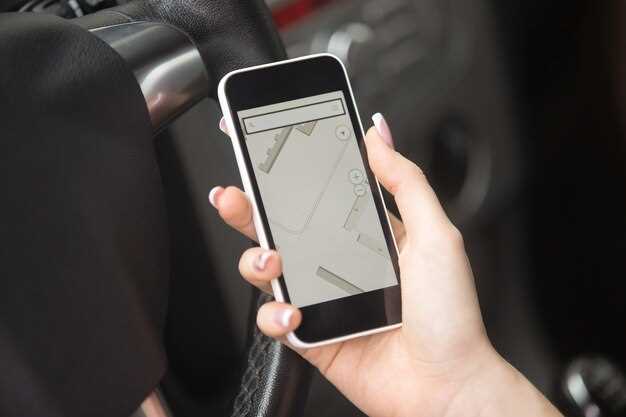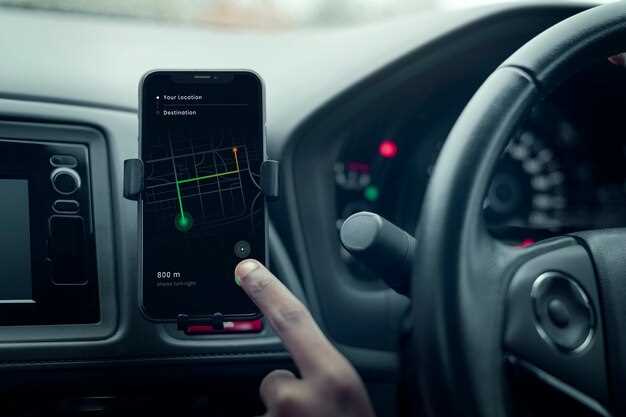
In today’s fast-paced world, staying connected while driving has become a necessity rather than a luxury. Whether you’re navigating unfamiliar streets, taking calls, or streaming music, having quick and easy access to your smartphone is essential for both convenience and safety. This is where car phone holders come into play, providing a reliable solution to keep your device within reach, allowing you to focus on the road.
With a myriad of options available on the market, selecting the right car phone holder can be overwhelming. Factors such as compatibility, mounting methods, and adjustability are crucial in making the right choice. The best holders not only secure your phone but also offer versatility in positioning, ensuring that you can easily view your screen without compromising safety.
In this article, we will explore the top car phone holders designed for easy accessibility, highlighting their unique features, strengths, and potential drawbacks. From suction mounts to vent holders and wireless charging options, we aim to guide you in finding the perfect solution to enhance your driving experience. Prepare to discover which models stand out and why they are essential accessories for any modern driver.
Choosing the Right Mount Type for Your Car

Selecting the appropriate mount type for your car is crucial for ensuring both functionality and safety while driving. Each type of phone mount offers unique advantages and considerations that suit different driving habits and vehicle layouts.
The most common types of mounts are suction cup mounts, dash mounts, vent mounts, and wireless charging mounts. Suction cup mounts provide versatility, allowing you to place them on the windshield or dashboard. They are easy to install and remove, making them a popular choice. However, they may not perform well in extreme temperatures or on uneven surfaces.
Dash mounts are designed to sit sturdily on your car’s dashboard, offering a secure base for your phone. They often feature an adhesive backing, ensuring they remain fixed during drives. Consider this option if you prefer a more permanent placement that minimizes motion and distraction.
Vent mounts clip directly onto your car’s air vents. They maximize accessibility while keeping your phone at eye level. However, compatibility with vent types may vary, so ensure your vehicle’s vents are suitable. Additionally, they can obstruct airflow when the AC is running.
Wireless charging mounts combine a phone holder with a charging function, eliminating the need for messy cables. They are ideal if you frequently use GPS navigation and prefer to maintain battery life. Keep in mind that your phone needs to support wireless charging for this option to be effective.
Consider your driving style and frequency of phone use when making a choice. Opt for a mount that allows quick access to your phone for hands-free functionality, while also ensuring it doesn’t obstruct your view of the road. Test different positions in your vehicle to find the most ergonomic setup that promotes safety and comfort.
Best Features to Look for in a Car Phone Holder

When choosing a car phone holder, several key features can enhance usability and ensure safety while driving. Here are the most important features to consider:
- Mounting Type: Choose between various mounting options such as dashboard mounts, windshield mounts, or vent mounts. Each has its advantages, but ensure that it fits your vehicle’s design and your personal preference.
- Adjustable Arms: Look for holders with adjustable or extendable arms. This feature allows you to customize the holder’s position according to your viewing angle, ensuring better accessibility and reducing distractions.
- 360-Degree Rotation: A holder that can rotate a full 360 degrees offers flexibility in positioning your device. This function is essential for both portrait and landscape viewing, particularly useful for navigation apps.
- Secure Grip: Opt for holders with strong grip systems. Rubberized or textured grips help keep your phone securely in place, minimizing the risk of it slipping or falling during a drive.
- Compatibility: Ensure that the holder accommodates a wide range of phone sizes. A universal design that fits both large and small devices prepares you for future devices and varying user needs.
- Ease of Use: Select a holder that lets you quickly insert and remove your phone using one hand. The simpler the mechanism, the safer it is when driving.
- Stability: The holder should offer stability, even on bumpy roads. A well-designed holder distributes weight evenly, reducing vibrations and providing clear visibility.
- Build Quality: High-quality materials ensure the durability of the phone holder. Look for options made from strong plastics, rubber, or metal to withstand daily use and environmental conditions.
- Charging Capability: Consider holders that come with built-in chargers, such as wireless charging pads. This feature allows you to keep your phone powered during long trips without the hassle of connecting cables.
- Rating and Reviews: Research user feedback and ratings. Well-reviewed products often indicate better performance and reliability, providing additional peace of mind.
By paying attention to these features, you can choose a car phone holder that significantly improves your driving experience while ensuring safety and convenience.
Installation Tips for Optimal Use in Different Vehicles
Ensuring that your car phone holder is installed correctly can significantly enhance its usability and accessibility. Here are some tips for optimal installation in various vehicle types:
1. Choose the Right Mounting Location: Different vehicles offer various places to attach a phone holder. In sedans, the dashboard or vent may be ideal, while in SUVs or trucks, consider using the center console or windshield. Ensure that the chosen location does not obstruct your view of the road or any necessary controls.
2. Consider Vehicle Controls: Take into account the placement of your vehicle’s controls. Avoid areas where your hand might need to reach for the air conditioning, gear shift, or other vital buttons. Position the phone holder where it does not distract you while driving.
3. Level Surface for Stability: Make sure the surface where you attach the holder is flat and clean. A stable position minimizes vibrations and keeps your phone secure during drives, particularly on bumpy roads.
4. Check Airflow in Vent Mounts: If you’re using a vent-mounted holder, ensure that it does not obstruct airflow from the vents. Obstructed vents can reduce the effectiveness of your vehicle’s climate control system.
5. Adhesive Mounting Precautions: For adhesive mounts, clean the surface thoroughly before application. This ensures a strong bond. Follow manufacturer instructions regarding wait times before attaching your phone to allow the adhesive to set properly.
6. Test for Accessibility: After installation, test the accessibility of the phone holder. Ensure that you can easily reach your phone for calls or navigation without leaning or straining your body. Adjust the holder’s angle, if necessary, to achieve the best ergonomic position.
7. Regular Maintenance: Periodically check the phone holder’s stability, especially after long trips. Ensure it hasn’t loosened, especially for suction or adhesive types, which may require reinstallation or cleaning to maintain grip.
8. Compatibility with Phone Cases: If you use a thick phone case, check that the holder can accommodate it without compromising the grip. Some holders may need adjustment or might not be suited for bulkier cases.
Implementing these tips will help ensure that your car phone holder is installed effectively, providing you with easy accessibility and a safer driving experience.





